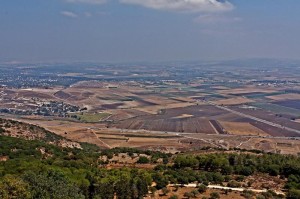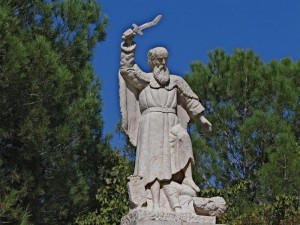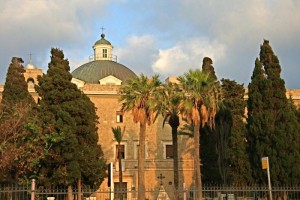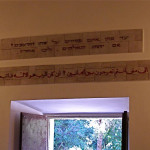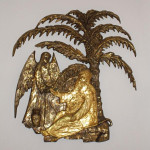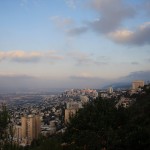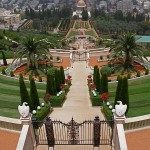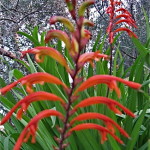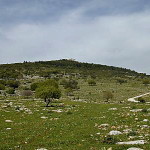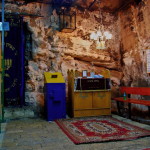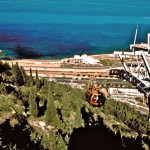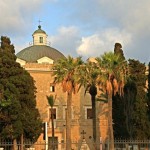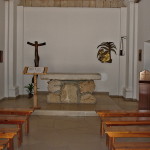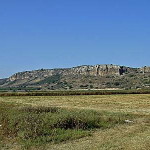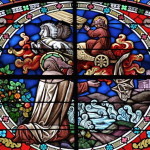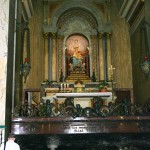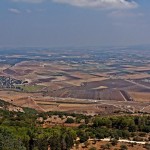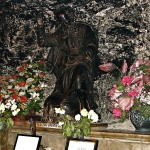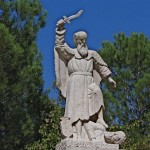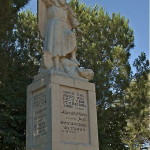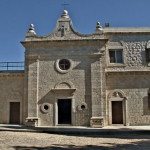Israel
The prophet Elijah’s fire-lighting challenge — one of the Old Testament’s most spectacular contests between Yahweh, the God of the Israelites, and a pagan deity — took place on the south-eastern summit of Mount Carmel.
Stretching south-east from the Mediterranean Sea, with the city of Haifa sloped against it, Mount Carmel is actually a coastal range rather than a mountain.
From ancient times it was considered a sacred place. It is often cited in the Old Testament for its beauty and fertility.
The 6th-century Greek mathematician Pythagoras is recorded to have visited the mountain because of its reputation for sacredness, stating that it was “the most holy of all mountains, and access was forbidden to many”.
Elijah called fire from heaven
Elijah’s challenge came during a period after successive kings “did evil in the sight of the Lord” (1 Kings 16:30).
King Ahab had married the Phoenician princess Jezebel. She turned his allegiance from Yahweh to her god Baal and had Yahweh’s prophets slaughtered.
So Elijah called on Ahab to assemble the 450 priests of Baal on Mount Carmel. There he challenged the priests to call on fire from Baal to light a sacrifice.
As the book of 1 Kings relates, Baal failed to respond to the priests’ cries. Then Elijah rebuilt the ruined altar of the Lord and offered a sacrifice. Immediately fire from heaven consumed the offering, even though it had been soaked in water.
Biblical scholar E. M. Blaiklock captures the vividness of the scene: “Picture it — the rabble of priests, their monotonous chant hypnotising the devotees to the point when they slashed body and limb in wild passion, the shaggy prophet sitting near and mocking their vain supplications, Ahab’s tent and rich entourage, the great curve of the watching, waiting host. Then the stab of fire and the burning sacrifice . . . .”
Statue marks site
On the south-eastern peak of Mount Carmel, the site is now known as Muhraka (“the Scorching”).
It is marked by a dramatic stone statue of Elijah, sword raised to heaven as he slaughters a Baal priest, and a small Carmelite monastery, surrounded by a nature reserve.
A superb view takes in the plain of Esdraelon and southern Galilee.
On the plain below is the Kishon brook, where Elijah took the priests of Baal and had them put to death.
Caves associated with Elijah
At the western edge of Mount Carmel is Stella Maris Monastery, the world headquarters of the Carmelites, a Catholic religious order.
A small cave under the monastery is held by a Christian tradition to be a place where Elijah occasionally lived — as people on Mount Carmel have lived in caves since prehistoric times.
Opposite the monastery, a footpath down towards the Mediterranean leads to another grotto called Elijah’s Cave. Here the prophet is said to have meditated before his encounter with the priests of Baal. The cave is also thought to be where Elijah established a “school of prophets”.
Mount Carmel’s most spectacular religious memorial, however, is the Baha’i Shrine of the Báb, which runs in manicured terraces up the northern slope. The site is a sacred place for Baha’is around the world.
Sites in the area:
Stella Maris Monastery
Elijah’s Cave
In Scripture:
Elijah triumphs over the priests of Baal: 1 Kings 18:1-40
- Inscriptions in Hebrew and Arabic in Carmelite church at Muhraka, Mount Carmel (Seetheholyland.net)
- Relief of angel feeding Elijah, in Carmelite church at Muhraka, Mount Carmel (Seetheholyland.net)
- View from edge of Mount Carmel to Haifa harbour (Ilan)
- Baha’i gardens and shrine on side of Mount Carmel (Seetheholyland.net)
- Flowers on Mount Carmel (© George David Byers)
- Muhraka, the scene of Elijah’s contest (© BiblePlaces.com)
- Male visitors’ section of Elijah’s Cave (© BibleWalks.com)
- Mediterranean Sea from top of Mount Carmel (© Israel Ministry of Tourism)
- Stella Maris Monastery on Mount Carmel (Ilan)
- Inside St Elias Church at Muhraka (James Emery)
- Southern side of Mount Carmel (© BiblePlaces.com)
- Stained glass in Stella Maris Monastery showing Elijah going up to heaven in a chariot of fire (© BibleWalks)
- Inside Stella Maris Monastery (Seetheholyland.net)
- View from top of Mt Carmel (Patrick Brennan)
- Statue of Elijah in Stella Maris church (Seetheholyland.net)
- Statue of Elijah slaying a Baal priest at Muhraka (© Biblicalisraeltours)
- Statue of Elijah at Muhraka (© Israel Ministry of Tourism)
- Muhraka chapel and monastery, Mount Carmel (© Israel Ministry of Tourism)
References
Blaiklock, E. M.: Eight Days in Israel (Ark Publishing, 1980)
Brownrigg, Ronald: Come, See the Place: A Pilgrim Guide to the Holy Land (Hodder and Stoughton, 1985)
Charlesworth, James H.: The Millennium Guide for Pilgrims to the Holy Land (BIBAL Press, 2000)
Freeman-Grenville, G. S. P.: The Holy Land: A Pilgrim’s Guide to Israel, Jordan and the Sinai (Continuum Publishing, 1996)
Gonen, Rivka: Biblical Holy Places: An illustrated guide (Collier Macmillan, 1987)
Inman, Nick, and McDonald, Ferdie (eds): Jerusalem & the Holy Land (Eyewitness Travel Guide, Dorling Kindersley, 2007)
External links

